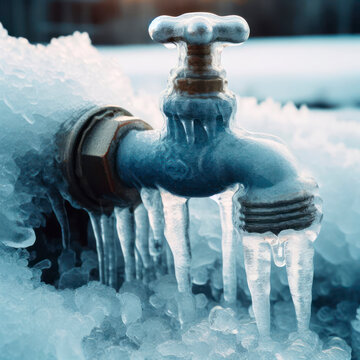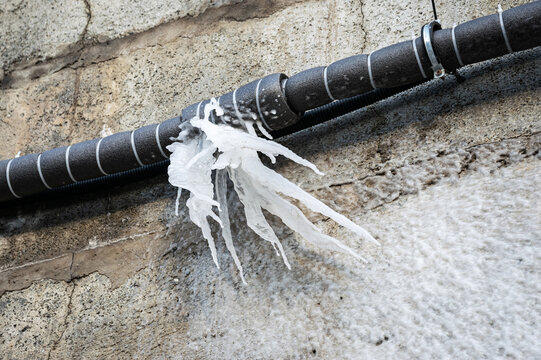Protect Against Frozen Pipes in Winter: Expert Advice
Protect Against Frozen Pipes in Winter: Expert Advice
Blog Article
Everybody seems to have their own unique way of thinking with regards to How To Avoid Freezing Pipes.

Cold weather can damage your plumbing, specifically by freezing pipelines. Right here's exactly how to stop it from occurring and what to do if it does.
Intro
As temperatures decline, the risk of frozen pipelines increases, potentially resulting in expensive repair services and water damages. Understanding just how to stop frozen pipelines is critical for property owners in cool environments.
Avoidance Tips
Insulating prone pipes
Cover pipelines in insulation sleeves or use warmth tape to protect them from freezing temperatures. Focus on pipelines in unheated or external areas of the home.
Heating methods
Keep interior rooms sufficiently warmed, especially locations with plumbing. Open up cabinet doors to enable warm air to distribute around pipes under sinks.
Just how to identify icy pipes
Search for reduced water flow from taps, unusual smells or noises from pipes, and visible frost on subjected pipes.
Long-Term Solutions
Structural modifications
Consider rerouting pipelines far from outside walls or unheated locations. Add additional insulation to attics, cellars, and crawl spaces.
Upgrading insulation
Buy high-grade insulation for pipes, attics, and wall surfaces. Appropriate insulation aids preserve consistent temperatures and minimizes the threat of icy pipelines.
Safeguarding Outside Plumbing
Yard pipes and outdoor faucets
Detach and drain pipes yard tubes prior to winter. Set up frost-proof spigots or cover exterior taps with insulated caps.
Understanding Frozen Pipelines
What causes pipes to freeze?
Pipelines freeze when exposed to temperatures listed below 32 ° F (0 ° C) for prolonged durations. As water inside the pipes ices up, it expands, putting pressure on the pipe wall surfaces and possibly triggering them to break.
Threats and damages
Icy pipelines can cause supply of water interruptions, building damages, and expensive repairs. Burst pipes can flooding homes and trigger comprehensive architectural damages.
Indications of Frozen Water Lines
Determining icy pipes early can prevent them from bursting.
What to Do If Your Pipes Freeze
Immediate actions to take
If you suspect icy pipes, maintain taps open up to alleviate stress as the ice melts. Utilize a hairdryer or towels taken in hot water to thaw pipelines slowly.
Conclusion
Avoiding frozen pipes requires positive actions and quick responses. By recognizing the reasons, indications, and preventive measures, home owners can protect their plumbing throughout winter.
5 Ways to Prevent Frozen Pipes
Drain Outdoor Faucets and Disconnect Hoses
First, close the shut-off valve that controls the flow of water in the pipe to your outdoor faucet. Then, head outside to disconnect and drain your hose and open the outdoor faucet to allow the water to completely drain out of the line. Turn off the faucet when done. Finally, head back to the shut-off valve and drain the remaining water inside the pipe into a bucket or container. Additionally, if you have a home irrigation system, you should consider hiring an expert to clear the system of water each year.
Insulate Pipes
One of the best and most cost-effective methods for preventing frozen water pipes is to wrap your pipes with insulation. This is especially important for areas in your home that aren’t exposed to heat, such as an attic. We suggest using foam sleeves, which can typically be found at your local hardware store.
Keep Heat Running at 65
Your pipes are located inside your walls, and the temperature there is much colder than the rest of the house. To prevent your pipes from freezing, The Insurance Information Institute suggests that you keep your home heated to at least 65 degrees, even when traveling. You may want to invest in smart devices that can keep an eye on the temperature in your home while you’re away.
Leave Water Dripping
Moving water — even a small trickle — can prevent ice from forming inside your pipes. When freezing temps are imminent, start a drip of water from all faucets that serve exposed pipes. Leaving a few faucets running will also help relieve pressure inside the pipes and help prevent a rupture if the water inside freezes.
Open Cupboard Doors
Warm your kitchen and bathroom pipes by opening cupboards and vanities. You should also leave your interior doors ajar to help warm air circulate evenly throughout your home.

I was brought to that editorial about 6 Ways to Prevent Frozen Pipes from an associate on a different blog. Liked our entry? Please quickly share it. Help another person find it. We cherish your readership.
Call Today Report this page